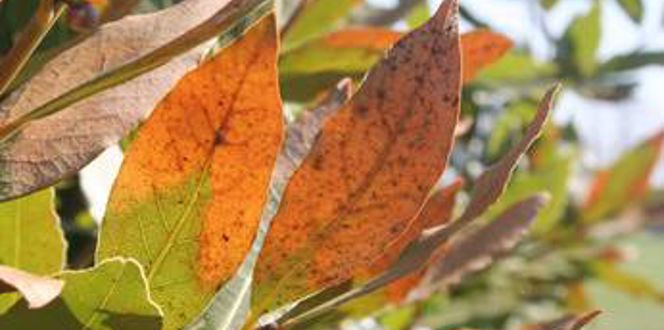No matter how carefully we plant our trees, they stress out as they adjust to their new home. That’s what we arborists like to call transplant shock, which encapsulates the host of problems plants can experience after they’re planted or transplanted.
Transplant shock symptoms vary quite a bit but often make it look like your newly planted tree is dying. Debbie, a Davey blog reader from Texas, said her newly planted maples “greened up as expected in early March but now suddenly have started dropping leaves and looking dead.”
A stressed tree can surely be renewed, but how can you tell if a tree is just shocked or a lost cause? Here’s how you can identify and fix tree transplant shock.
Tree Transplant Shock Recovery
Transplant shock is tough for trees, but not anything they can’t bounce back from (as long as you catch it early and help them)! All you need to do is know the symptoms, recovery techniques and time it takes to repair trees.
Leaves Dropping After Transplant and Other Signs of Shock
Debbie’s maple trees are dropping leaves as a sign of shock. But transplant shock can look much different for your tree.
Other signs of a tree in shock include:
- Leaf scorch
- Brown leaf tips
- Premature fall color
- Stunted twig or flower growth
- Late spring budding
- Branch dieback
Is my tree in shock or dead?
Dead trees and trees in shock can look deceivingly similar, but there’s an easy way to tell the difference.
Pick a random twig on the tree and scratch it with your finger or a pocket knife. Do the same for a few other twigs throughout the tree. If they’re all bright green and moist underneath, viola! The tree is alive.
How to Save a “Dying” Transplanted Tree
One of the main reasons trees struggle after being planted or transplanted is because they lose a massive amount of their root system during the process. Sometimes up to 95 percent! And to make it even tougher, the roots that are left are often incredibly dry, but you can help out with that.
Here’s how to help solve that:
- Hydrate roots with at least one inch of water each week.
- Add a two-to-four-inch deep layer of mulch from the tree’s base to its outermost leaves. Then, pull the mulch a few inches away from the trunk. You want to avoid volcano mulching. More on that here.
If hydration doesn’t seem to be working, think back to when you first planted the tree. Was the hole the right size? It’s incredibly important for a planting hole to be 2 to 3 times the tree’s root spread and deep enough for the root flare (where the tree starts to widen) to sit slightly above ground.
While replanting the tree yet again is hitting restart on the stressful process, it’s probably the best thing for your tree if the planting spot wasn’t quite right the first time. Here’s how to fix a tree that wasn’t planted right.
How long does it take a tree to recover from transplant shock?
The last step in a successful transplant process is patience! Some trees take two or more years to get rid of all their stress symptoms. Occasionally, it can even take up to 5 years for trees to fully recover.
In most cases, it takes a year or so for trees to shake off transplant shock.




